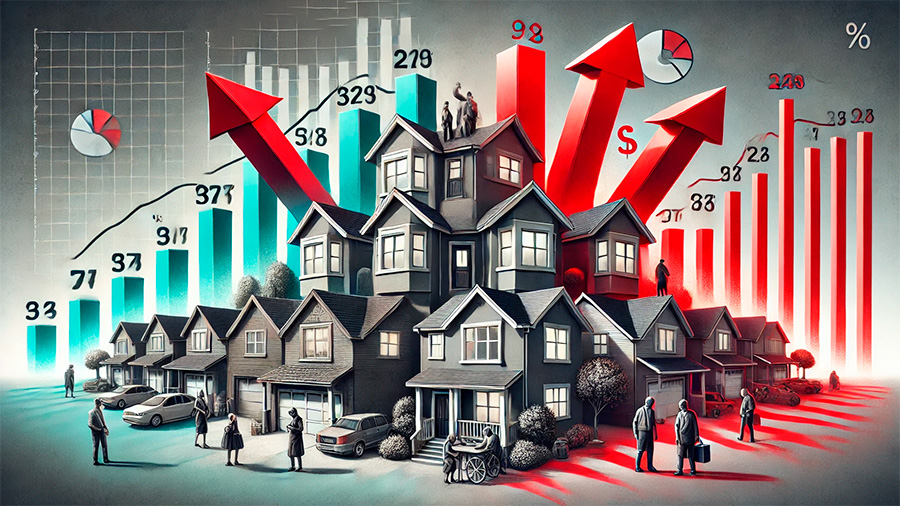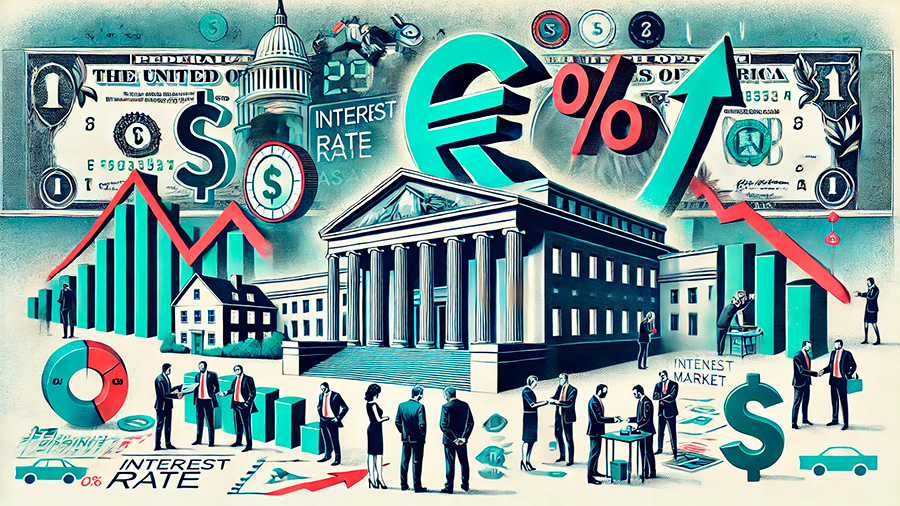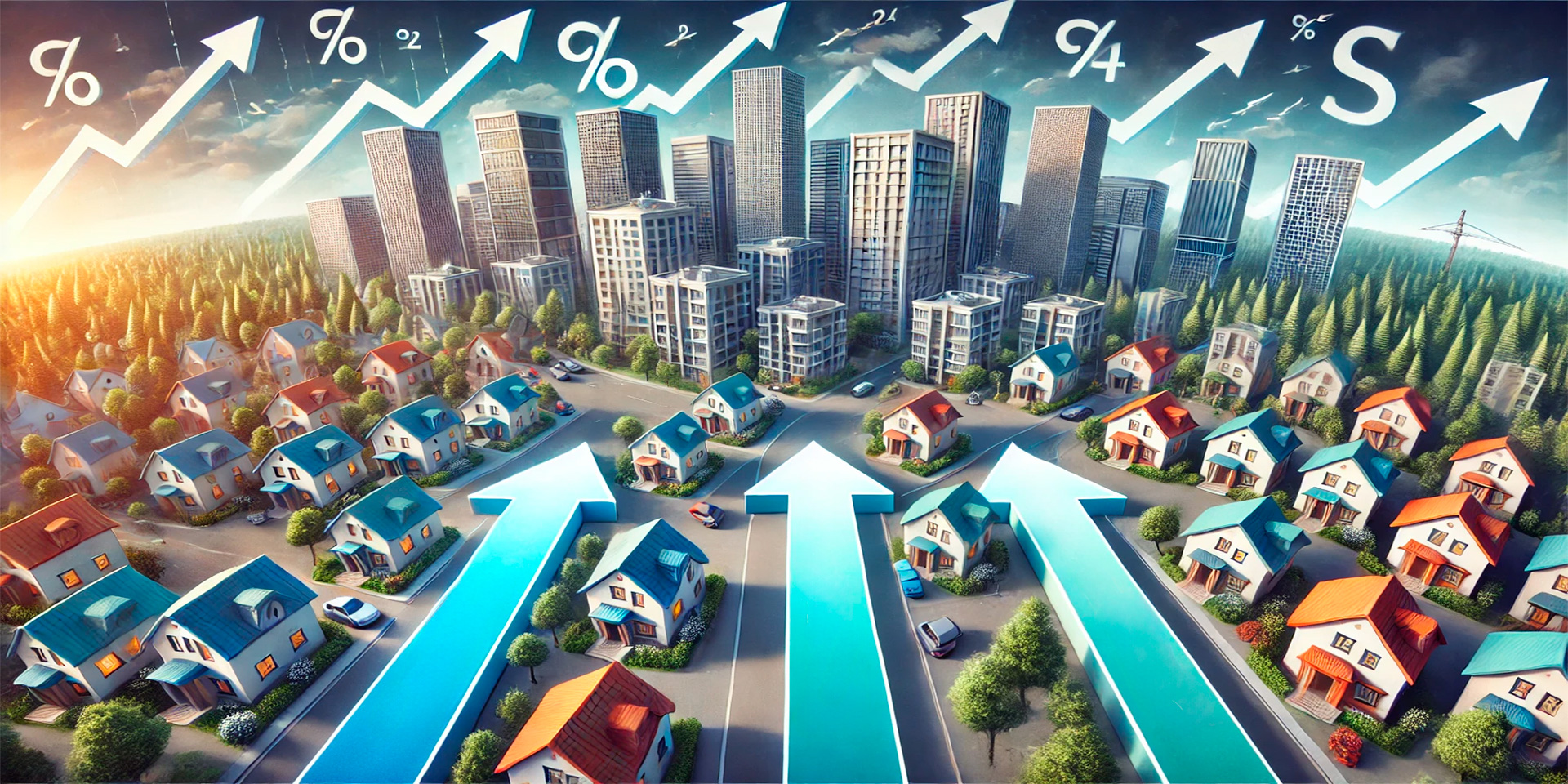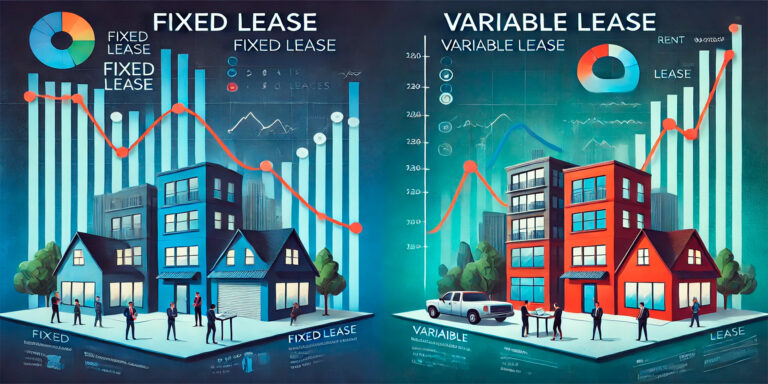Interest rate policies play a crucial role in shaping the housing market by directly affecting the cost of mortgages, housing affordability, and overall demand for properties. When central banks adjust interest rates, it triggers a chain reaction that influences borrowing costs, property prices, and renters’ decisions. In 2024, as interest rate policies remain a critical tool for managing inflation and economic growth, they continue to have a profound impact on the housing market. This article will explore how interest rate policies are shaping housing affordability and the broader market dynamics, affecting both homebuyers and renters.
The Relationship Between Interest Rates and Mortgages
Interest rates directly affect mortgage rates, which in turn influence housing affordability. When central banks, such as the Federal Reserve, adjust interest rates to manage inflation or economic growth, mortgage lenders follow suit by raising or lowering the rates they offer to borrowers. These changes in borrowing costs have a direct impact on how much homebuyers can afford to borrow, shaping the housing market’s overall health.
Rising Interest Rates and Mortgage Costs
When interest rates rise, mortgage rates increase, making it more expensive for buyers to borrow money to purchase a home. For example, a small rise in mortgage rates can significantly affect monthly payments. A 1% increase in mortgage rates can add hundreds of dollars to a homeowner’s monthly payment, depending on the loan size. As mortgage rates climb, buyers’ purchasing power diminishes, leading to fewer qualified buyers in the market and slower home sales.
Example: If a buyer takes out a $300,000 mortgage at a 3% interest rate, their monthly payment would be around $1,265 (excluding taxes and insurance). If the rate rises to 4%, their payment increases to about $1,432—a difference of $167 per month.
Lower Interest Rates and Increased Affordability
Conversely, when interest rates are lowered, mortgage rates decrease, making home loans more affordable. Lower borrowing costs can increase demand for homes, as buyers are able to finance larger loans and afford higher-priced properties. This increased demand often leads to higher property prices in competitive markets. During periods of low interest rates, housing markets typically experience higher sales volumes and increased price growth.
Example: A 1% drop in mortgage rates can save buyers hundreds of dollars each month. For a $400,000 mortgage, reducing the interest rate from 4% to 3% could lower monthly payments by about $230, making homeownership more affordable.

The Impact of Interest Rate Policies on Housing Affordability
Interest rate policies, particularly those aimed at controlling inflation, can have significant effects on housing affordability. When central banks raise rates to curb inflation, borrowing becomes more expensive, reducing the number of potential homebuyers. This has a ripple effect on home prices, demand, and overall market activity.
Reduced Homebuyer Demand
As interest rates rise, fewer buyers can afford to purchase homes, reducing demand in the housing market. When demand decreases, it puts downward pressure on home prices, which can lead to a cooling of the housing market. For sellers, this means homes may take longer to sell, and they may need to adjust their pricing expectations.
Example: In 2022 and 2023, as interest rates increased to combat inflation, many potential homebuyers were priced out of the market. This caused a slowdown in home sales and led to price reductions in some overheated markets.
Affordability Challenges for First-Time Buyers
First-time homebuyers are particularly sensitive to interest rate changes, as they often have less financial flexibility and smaller down payments. Rising mortgage rates can make it difficult for first-time buyers to qualify for loans or afford homes in their desired locations. As interest rates rise, many first-time buyers are forced to delay purchasing a home or adjust their expectations by looking for smaller properties or homes in less expensive areas.
Example: A first-time buyer with a budget of $350,000 may be able to afford a home at a 3% interest rate but struggle to find a suitable property when rates rise to 5%, effectively shrinking their budget to around $300,000.
Effects of Interest Rate Policies on Home Prices
Interest rate policies can have a significant impact on home prices, both in the short term and long term. When rates are low, buyers can afford more expensive homes, which drives up demand and increases home prices. However, when rates rise, the opposite occurs, and home prices may stabilize or even decline in response to reduced demand.
Price Appreciation in Low-Interest Rate Environments
During periods of low interest rates, the housing market often experiences rapid price appreciation due to increased buyer demand. With lower mortgage rates, more buyers can afford higher-priced homes, leading to competition among buyers and driving up prices. This can create an environment where home prices rise faster than wages, leading to affordability issues over time.
Example: In the early 2020s, historically low mortgage rates fueled a housing boom in many parts of the U.S. and Europe. Buyers were able to finance larger loans at low costs, resulting in bidding wars and double-digit price growth in major cities.
Stabilization or Decline in High-Interest Rate Environments
When interest rates rise, home prices tend to stabilize or decline as demand weakens. Fewer buyers are able to afford homes, and sellers may be forced to lower prices to attract offers. This cooling effect can help bring overheated housing markets back to more sustainable levels, though it may also lead to slower market activity and longer sales cycles.
Example: In 2024, rising interest rates have led to price adjustments in previously hot markets like San Francisco, where home prices had surged during the low-rate environment of the pandemic. As buyers pull back, sellers are lowering prices to attract the smaller pool of qualified buyers.
Interest Rate Policies and the Rental Market
While interest rate policies primarily influence homebuyers, they also affect the rental market. When interest rates rise and homeownership becomes less affordable, more people turn to renting, which can drive up demand for rental properties. This shift can lead to higher rental prices, especially in urban areas where housing demand is already high.
Increased Demand for Rentals
When mortgage rates rise, many potential homebuyers are priced out of the market, leading to increased demand for rental properties. This trend is especially pronounced among first-time buyers who may delay purchasing a home in favor of renting while they save for a down payment or wait for more favorable interest rates. As demand for rental properties rises, landlords may raise rents, particularly in high-demand markets.
Example: In cities like New York and Los Angeles, rising mortgage rates have caused an influx of renters, leading to higher rental prices and reduced availability of rental units. Landlords in these markets have capitalized on the increased demand by raising rents, further complicating affordability for tenants.
Renters Waiting for Lower Rates
Many renters choose to stay in the rental market longer when mortgage rates are high, hoping for future rate cuts that will make homeownership more affordable. This prolonged rental period contributes to higher demand for rental housing, particularly in areas where rental supply is limited. As more renters compete for available properties, rent prices can rise, making it harder for individuals to save for a home while managing high living costs.

Government Policies and Interest Rate Adjustments
Government interest rate policies, particularly those implemented by central banks, are designed to manage inflation, control economic growth, and stabilize financial markets. These policies have a direct impact on the housing market, as they influence borrowing costs and home prices.
Inflation Control and Interest Rate Hikes
When inflation rises, central banks often respond by raising interest rates to cool the economy. These rate hikes increase the cost of borrowing, including mortgages, and help curb inflation by reducing consumer spending. However, they also make homeownership less affordable, as higher mortgage rates reduce buyers’ purchasing power.
Example: In 2022 and 2023, the Federal Reserve implemented a series of rate hikes to combat inflation, causing mortgage rates to rise and slowing down the housing market. This policy had the desired effect of cooling inflation but also reduced affordability for homebuyers.
Stimulating the Economy with Lower Rates
During economic downturns, governments often lower interest rates to stimulate spending and investment. By making borrowing cheaper, lower interest rates encourage homebuyers to enter the market, boosting demand for housing. This can help revitalize the housing market and contribute to broader economic recovery.
Example: In response to the economic downturn caused by the COVID-19 pandemic, central banks worldwide slashed interest rates to near-zero levels, leading to a surge in home sales and price appreciation as buyers took advantage of historically low mortgage rates.
Conclusion: How Interest Rate Policies Shape the Housing Market
Interest rate policies are a powerful tool that shapes the housing market by influencing mortgage costs, home prices, and rental demand. Rising rates tend to reduce affordability, slow demand, and cool overheated markets, while lower rates encourage homebuying and drive price appreciation. Whether you’re a homebuyer, renter, or investor, staying informed about interest rate trends and their impact on housing can help you make smarter financial decisions in 2024 and beyond.






